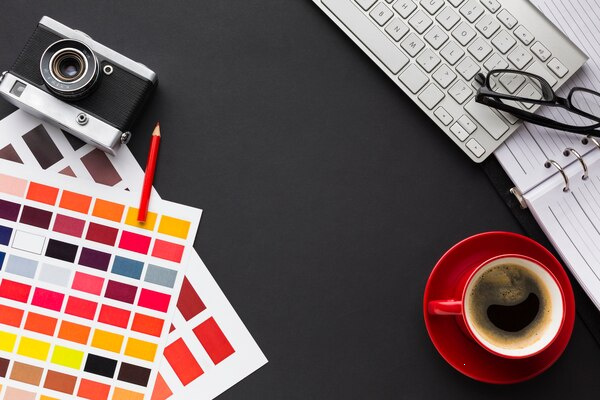Unveiling Creativity in Today's Design Trends

The world of design is constantly evolving, reflecting changes in culture, technology, and society. Today's design trends are a fascinating blend of innovation and nostalgia, pulling from a wide array of influences to create something entirely new. As we move deeper into the 21st century, creativity in design is not just encouraged; it's imperative. Here's how contemporary trends are shaping the future of design.
1. Minimalism with a Twist
Minimalism continues to be a dominant trend across multiple design disciplines, but it's taken on new life with the introduction of bold colors and playful elements. This approach balances simplicity with dynamic features, creating clean yet captivating visuals. Think of minimalism not as a strict reduction, but as a canvas where one bold choice can transform an entire design. It’s about maintaining clarity while infusing personality.
2. Sustainable and Eco-friendly Design
Sustainability is no longer a trend—it's a necessity. Designers are increasingly mindful of the environmental impact of their work, turning to sustainable materials and processes. From using recycled materials to implementing energy-efficient systems, eco-friendly design is about creating products and spaces that meet today's needs without compromising future generations. This is seen not only in product design but also in architecture and interior spaces, where green solutions are integrated into both form and function.
3. Embracing Technology
Technology continues to push the boundaries of what’s possible in design. Virtual reality (VR) and augmented reality (AR) have opened up new possibilities for experiential design, allowing creators to craft environments that can be explored digitally. Similarly, AI-driven design tools are enabling more personalized and responsive design solutions. Technology is not replacing the human touch; rather, it's amplifying our creative potential, leading to innovative and interactive user experiences.
4. Retro Revival
Nostalgia has a powerful pull, and today's design trends often incorporate elements from past decades. Whether it’s the soft pastels and geometric shapes of the 80s or the bold, expressive typography of the 70s, retro elements are being reimagined for the contemporary landscape. This blending of old and new creates a sense of familiarity while remaining fresh and exciting.
5. Bold Typography
Typography is becoming increasingly bold and experimental, serving as more than just a medium for communication but as a key design element that can make or break a project. Intricate lettering, large typefaces, and surprising layouts are being used to capture attention and convey messages in a more impactful way. Designers are now treating typography as an art form unto itself, pushing the boundaries of readability and visual interest.
6. Fluid and Organic Shapes
Rigid grids and blocky shapes are giving way to more fluid and organic forms. This trend reflects a desire to connect more closely with nature and the human body’s natural curves. Such designs create more inviting and emotionally engaging atmospheres, whether in digital interfaces or physical products. The move towards fluidity and organic shapes represents a shift from the mechanical to the human-centric in design philosophy.
7. Inclusive Design
Inclusivity is gaining traction as designers become more aware of the diverse needs of users. Designing with accessibility and inclusivity in mind is not only ethical but also expands market reach. This includes considering color contrasts for those with visual impairments, adding functionality for disabled users, and recognizing cultural differences to create more globally appealing designs.
In conclusion, today's design trends are a testament to the power of creativity and innovation. By marrying technology with sustainability, drawing from historical influences, and prioritizing inclusivity, designers are crafting experiences that are both meaningful and beautiful. As design continues to evolve, it will undoubtedly reflect the ever-changing tapestry of our collective human experience.